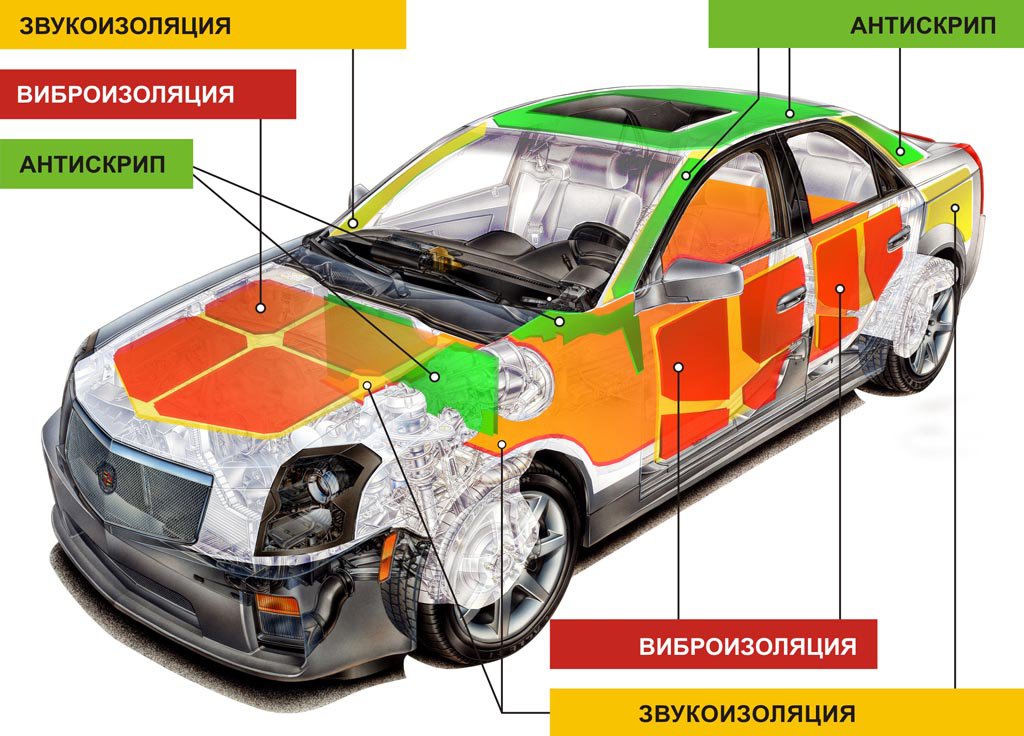
How to soundproof your car
Content
When you install a quality audio system, you want to enjoy music without the noise of the road, without disturbing those around you. Soundproofing eliminates much of the vibration that occurs at higher levels…
When you install a quality audio system, you want to enjoy music without the noise of the road, without disturbing those around you. Soundproofing eliminates much of the vibration associated with higher sound levels.
Soundproofing uses certain materials to block outside noise. While it cannot eliminate all noise, the right materials greatly reduce it. This process can also reduce vibration sounds on the frame or resonating panels. The materials are placed behind the door panels, under the carpet on the floor, in the trunk and even in the engine compartment.
Part 1 of 5: Selecting the Material to Use
Select the materials you plan to use to soundproof your vehicle. You may need to use more than one type of material to get the best results. Ensure that the materials used will not damage the vehicle or wiring during the installation process.
Step 1: Choose materials. The decision you make will ultimately determine how soundproofed your vehicle is.
Here is a table to help you make an informed decision:
Part 2 of 3: Use damper mats
Step 1: Remove the door panels. Remove the door panels to access the floor mats.
Step 2: Clean the metal area. Clean the metal part of the door panels with acetone to ensure the adhesive adheres properly.
Step 3: Use glue. Either apply adhesive to the surface or remove some of the adhesive from the back of the damping mats.
Step 4: Place damper mats between two door panels.. This will help reduce vibration along those two panels because there is less empty space.
Step 5: Place the mat inside the engine. Open the hood and place another mat inside the engine bay to reduce the rattling noises that accompany some frequencies. Use a special adhesive designed specifically for cars in heated rooms.
Step 6: Spray Exposed Areas. Look for small spaces around the panels and use either foam or insulating sprays in these places.
Spray around the door and inside the engine bay, but make sure the foam or spray is for those areas.
Part 3 of 3: Use insulation
Step 1: Remove Seats and Panels. Remove the seats and door panels from the vehicle.
Step 2: Take measurements. Measure door panels and floor to install insulation.
Step 3: Cut the insulation. Cut the insulation to size.
Step 4: Remove the carpet from the floor. Carefully remove the carpet from the floor.
Step 5: Clean with acetone. Wipe all areas with acetone to ensure the adhesive adheres properly.
Step 6: apply glue. Apply glue to the car floor and door panels.
Step 7: Press the insulation in place. Place the insulation over the adhesive and press firmly from the center to the edges to make sure the materials are tight.
Step 8: Roll any bubbles. Use a roller to remove any bubbles or lumps in the insulation.
Step 9: Spray foam onto exposed areas. Apply foam or spray to cracks and crevices after installing insulation.
Step 10: Let it dry. Allow materials to dry in place before proceeding.
Step 11: Replace the carpet. Put the carpet back on top of the insulation.
Step 12: Replace the Seats. Put the seats back in place.
Soundproofing your vehicle is an important way to prevent noise and interference from entering while you're driving, as well as preventing music from leaking out of your stereo system. If you notice that your door doesn't close properly after soundproofing your car, or if you need more information about the process, see your mechanic for quick and detailed advice.

